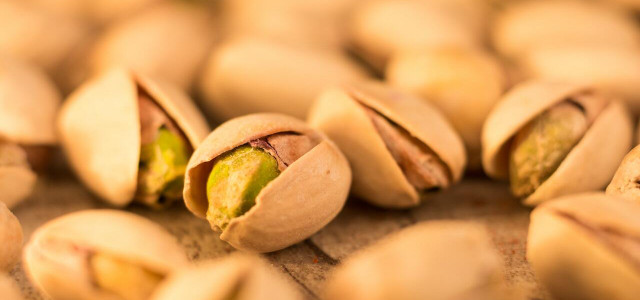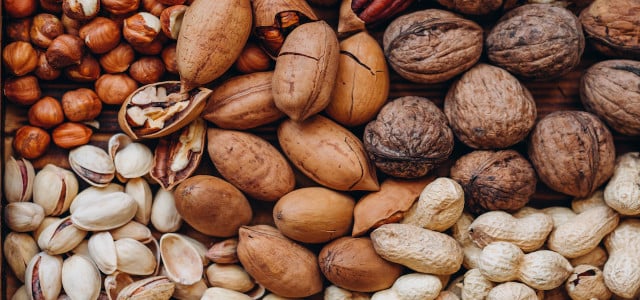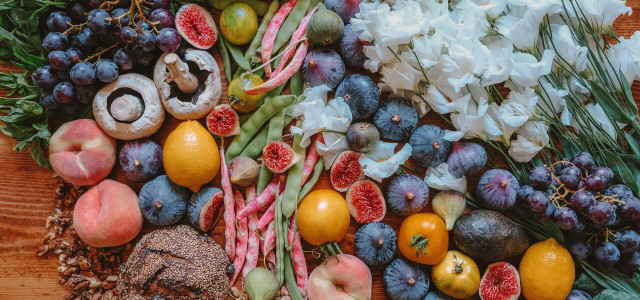Pistachios are small but mighty nuts, popular in sweet and savory dishes. How are pistachios grown? Why are they so expensive? We’ll take a closer look.
The origins of the pistachio tree can be traced back to ancient Persia, which spanned parts of modern-day Central Asia and the Middle East. There is archaeological evidence of pistachios as early as B.C. 6750, making them among the oldest known flowering nut trees. It wasn’t until the late 1800s that pistachio trees were first planted on American soil, however, and it was the 1960s before the trade really took off.
Though classified as a nut in the culinary world, pistachios are a seed of the Pistacia vera tree and belong to the cashew family. They are recognizable by their beige shell and green nuts, which get their color from chlorophyll. They are full of healthy fats and antioxidants, are high in protein and are a good source of phosphorus and Vitamin B6. Furthermore, these tiny little seeds are considered a complete plant protein and contain all nine essential amino acids.
How Are Pistachios Grown?
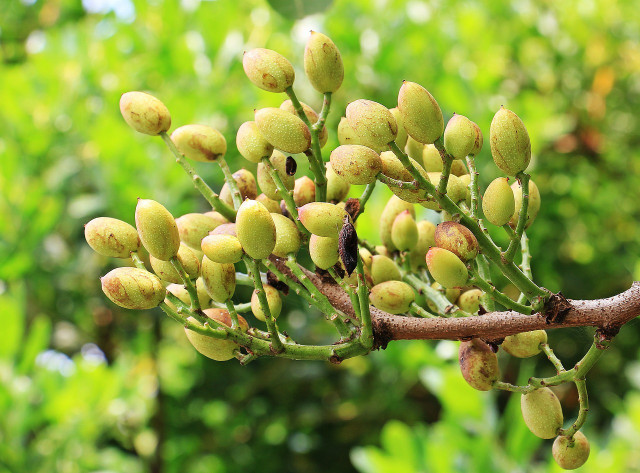


Pistachio trees grow best in arid, semi-desert conditions — long, dry, and hot summers with low humidity and cool (not freezing) winters. They are planted in orchards to make managing and pollinating them easier. Traditionally, both male and female trees were planted close together for the female trees to bear fruit through cross-pollination. However, to keep up with global demand, many pistachio farmers have begun using artificial pollination to avoid wasting space on male trees that don’t produce fruit.
Once planted, pistachio trees take four to five years to bear fruit and only begin producing high-yield crops when they reach 15-20 years old. It is worth the wait because, in the right conditions, pistachio trees can continue producing fruit for centuries. That said, pistachio cultivation is a bit tricky; they are biennial bearing, which means every heavy crop year is followed by a much smaller, potentially non-existent yield the following year.
Pistachio fruit grows in grape-like clusters on trees, with each cluster containing an average of 40 drupes. As the drupe dries, it forms a hard shell around the edible seed, making it appear like a nut. Only once the hard shell splits are the pistachios ready for harvest. The process typically takes place between early September and mid-October in the Northern Hemisphere and lasts between two and four weeks.
Growing Locations and Sustainability
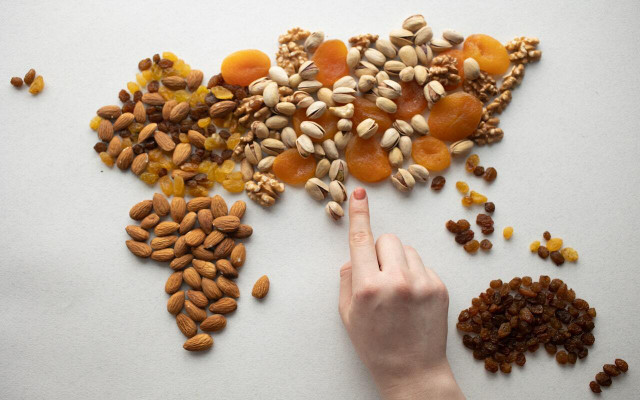


Five countries grow the lion’s share of pistachios, though not all are major exporters. The primary producers are Iran, the US, Turkey, China and Syria.
In the US, just three states grow 100% of pistachios: California, New Mexico and Arizona. Many large companies that own these farms choose to put their processing facilities near the harvesting location to ensure efficiency.
Producing one pound of pistachios requires approximately 5,000 liters of water, making them one of the most water-intensive nuts. This is a problem, as 98% of US-grown pistachios are cultivated in California, where water conservation is essential.
Why Are Pistachios So Expensive?
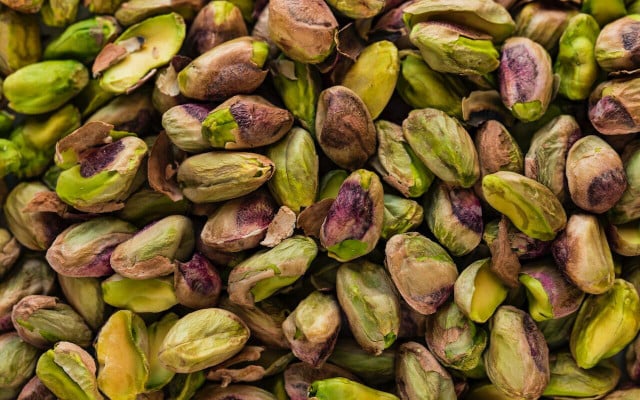


Nuts can be an expensive snack, and pistachios are particularly pricey. A number of factors contribute to the high cost:
- They are only produced in a few areas worldwide, as their growing requirements are very specific. They need cool winters that don’t freeze and long hot summers with low humidity to produce fruit.
- The trees take a long time to mature and only begin to bear fruit around 15 years after planting.
- Each female tree can only yield approximately 40 pounds of dry, hulled nuts. This number also depends on each year’s growing conditions.
- Due to their biennial nature, peak production only occurs every second year.
- Pistachios require a lot of hands-on labor. The machinery requires human supervision, and the nuts are hand-sorted for quality control.
- Pistachio production is easily influenced by the elements, such as drought, excessive rain, heat or cold and high winds.
Pistachio Alternatives
If you are looking for nuts with similar texture and flavor profiles, try:
- Cashews
- Pine Nuts
- Almonds
- Hazelnuts
Keep in mind that these nuts also have a high environmental impact. When purchasing nuts of any sort, look for fair trade and organic in order to reduce your carbon footprint.
Read more:
- How to Plant and Grow Peanuts at Home
- 10 of The Best Hikes in Southern California
- Are Chestnuts Good for You? Benefits, Uses & Environmental Impact
Do you like this post?






